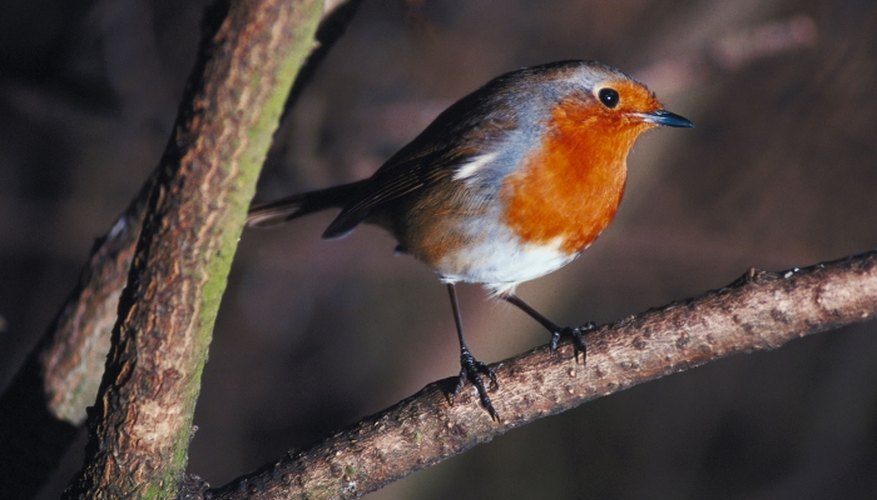The European Robin is common in gardens, parks and woodlands throughout Europe. It is recognised by its red breast and face. The European Robin's tail is brown, grey and white; the bird is more than 13 cm (5 inches) in length and has a wingspan of about 25 cm (10 inches). Males and females are similar in appearance. This robin migrates southward when it lives in the northern part of Europe. It is also found in North Africa and islands on the Atlantic.
Juvenile stage
When the European Robin is first born its plumage is speckled brown and dull. Its red plumage comes after its first moulting in late summer. The juvenile's parents are territorial, especially when they have hatchlings in a nest. European Robins are born in March; there are usually three to nine eggs. They hatch in 12 to 15 days and are born without feathers. The first feathers begin to appear in about three days.
- When the European Robin is first born its plumage is speckled brown and dull.
- Its red plumage comes after its first moulting in late summer.
Courting and breeding
Robins don't tolerate each other well until it is time for them to breed. They court and pair up as early as January and live in the same territory until March. The female builds the nest and the male brings her food, which is part of the courting. During breeding season the female gives loud calls that sound like the begging calls of their fledglings. M. East writes in "Aspects of Courtship and Parental Care of the European Robin" that these calls may encourage the courtship feeding, but they "might also convey information about her location, fertility status, and the attentiveness of her mate."
- Robins don't tolerate each other well until it is time for them to breed.
- M. East writes in "Aspects of Courtship and Parental Care of the European Robin" that these calls may encourage the courtship feeding, but they "might also convey information about her location, fertility status, and the attentiveness of her mate."
Nesting
The pair of robins not only tolerates each other while they're nesting, they unite to defend their territory and protect the eggs and later their hatchlings against other robins and predators. On average, 60 per cent of eggs become hatchlings. The female stays with the young while the male supplies its mate and later its young hatchlings with food. European Robins usually have two broods per year.
- The pair of robins not only tolerates each other while they're nesting, they unite to defend their territory and protect the eggs and later their hatchlings against other robins and predators.
- The female stays with the young while the male supplies its mate and later its young hatchlings with food.
Lifespan
In the wild, the European Robin has a very short lifespan of about one or two years, though some live much longer. In captivity it can live for more than 10 years. According to the website Young People's Trust for the Environment, almost three quarters of all European Robins die before they are a year old, usually being attacked by predators. Despite the short lifespan and untimely deaths, the European Robin is not declining in population.
- In the wild, the European Robin has a very short lifespan of about one or two years, though some live much longer.
